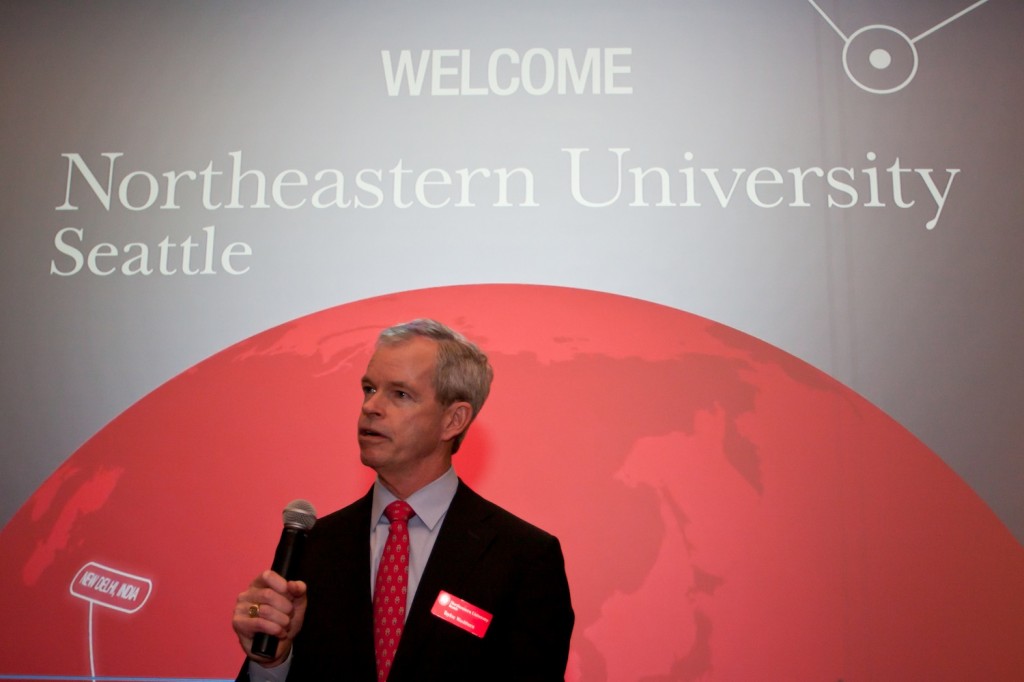The Time to Take Action and Close the Skills Gap is Now!

Last month Northeastern University – Seattle hosted a program at the World Trade Center Seattle titled, Closing the Skills Gap: Collaboration and Innovation Leading to Change, which I was honored to moderate. Before the panel discussion, I wrote a blog post to outline the problem our region faces with a skills gap that yields thousands of unfilled jobs and just as many people without the desired qualifications to fill them.
The panel discussion was a valuable catalyst to thinking about how industries, government and higher education can work together to help companies find job seekers with the qualifications they need to be successful. The New York Times recently declared Seattle the new center of a tech boom, only further validating the fact that we have to do everything we can to educate individuals in order to fill that need.
The panel included, Mike Monroe, COO, Washington Technology Industry Association; State Representative Larry Seaquist, Chair of the House of Representatives Higher Education Committee; State Representative Chad Magendanz, member of the House of Representatives Higher Education Committee; and Dave Wallace, Research Unit Manager, Washington State Workforce Training Board.
We were fortunate to have among us in the audience key leaders in the education and workforce fields, including representatives from Seattle Community Colleges, the Lake Washington Institute of Technology, Project Lead the Way, representatives from Congresswoman Susan DelBene’s Office, Puget Sound Regional Council, the Washington Business Alliance and the Pacific Northwest Economic Region, just to name a few.
The State of it All
The discussion focused on the key problems with the skills gap, potential solutions and next steps. In the end, we all collectively agreed that there are a handful of key issues to tackle:
- Our state’s higher education institutions are not big enough to feed the demanding appetite of our local companies. This means businesses are looking to imported talent for their needs and still over 20,000 STEM jobs are left unfilled.
- Our region must do a better job connecting unemployed or underemployed individuals who are slightly older and more diverse to the higher education system, hence advancing their training for the workforce.
- Education in computer science should start earlier in the education cycle – 90 percent of Washington schools in the state do not even offer computer science classes.
- There is an opportunity to encourage a more collaborative working relationship between our region’s technology companies and higher education institutions to develop curriculum, teach programs, and/or hire interns and co-op students.
- WTIA CEO Michael Schutzler recently published an op-ed in Crosscut on this very issue.
- Many companies struggle to find the right “fit” between the skills of students and the skills that the job requires.
Representative Seaquist noted that the skills gap (which he calls a “skills chasm”) can be attributed to a steady decline in state support for higher education, a trend that has not improved in recent years.
Both panel members and attendees expressed a welcome desire, as WTIA has emphasized to technology companies to, “show up, flex your muscles and actively engage,” in public policy issues around higher education. There was even an expressed interest in a statewide initiative focused on higher education, so stay tuned for those discussions moving forward.
We know that more collaboration between tech companies and higher education is better for our workforce. The WTIA is teaming up with a coalition of community colleges to secure a $15 million Trade Adjustment Assistance Community College and Career Training Program (TAA) grant to boost computer science capacity and is developing an “Internship in a Box” program to help small to medium companies hire interns or co-ops.
So what’s next?
Our discussion ended with panel members and attendees agreeing on a series of actions to help close the skills gap:
- Fully support the passage of The Federal Workforce Innovation and Opportunity Act, which is now on its way to President Obama’s desk.
- Continue to discuss a statewide ballot initiative around higher education for 2016.
- Support local nonprofits and Washington STEM as they work to discover opportunities for collaboration in our communities with employers and businesses.
- Mobilize support around funding for two federal H1B1 and TAAC grants.
- Continued engagement among WTIA members to invest time and energy to developing workers needed for technology jobs around the state.
Whether you are in search of a job, a student, an employer or a nonprofit member, we welcome your ideas and involvement in continuing this dialogue. For more information and tools, please check out our resource page and let us know if you have anything to add to it. Working together in a focused and sustained manner, we will bridge these gaps between jobs and training!




